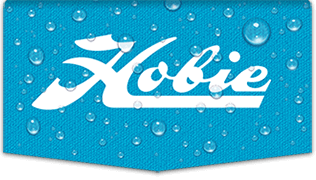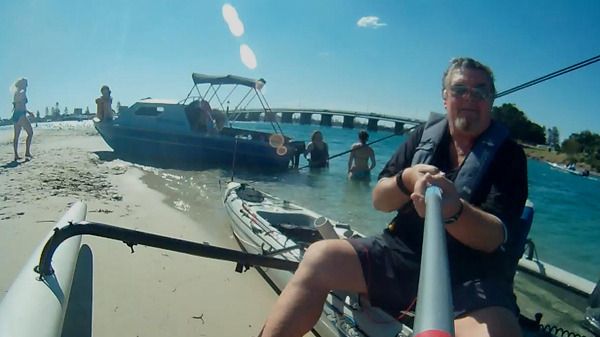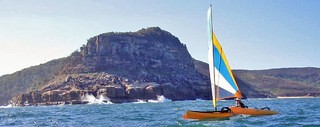After much inspiration here, I finally finished my wooden hakas, and given them their first sea trial. Let me just say that, wow, what a different experience it is sailing with these (for the better). I thought I'd split time between sitting on them and in the cockpit, but I spent nearly my entire 3 hour sail, except for some downwind time, up on the hakas. Also, since I chose to build the "expedition" model (not light weight...built for comfort not speed), I hung out for some time lounging on the water. I could go on, but onto the specifics of my design.
As anything we do, a lot is trial and error, looking at what others have done, and ultimately, deciding what is best for you. While I really like what I have done, I would probably do a few things different if I were to build them again.
My hakas are 6 foot 2 inches in length, built out of 1" x 3" and 1" x 4" Spruce Pine. They weigh in at about 20 pounds, which is much heavier than I would have liked. (They were only 18 pounds before the epoxy and varnish.) The spruce pine, also called "whitewood" at the local big box store, is soft. The epoxy not only gives the wood the ultimate protection, but hardened it right up as well. However, this was one of the most expensive parts of the project. I used West Systems 105 Epoxy Resin. I believe it was around $60 for the resin and hardener. This allowed me 2 coats. I then came back with 3 coats of marine varnish. Oh, and I stained the benches before applying anything. While the epoxy was probably good enough without the varnish, I read that it could turn colors due to the lack of UV inhibitors which the varnish possesses. However, the varnish itself gave the color a bit of a yellowish hue. Between the slight coloration of epoxy and varnish, it's really not the same color as the stain I started with. But I guess the yellow hue matches my boat better! By the way, I had never used either of these products before, and with not that really close inspection, the untrained eye could probably tell as much. It was kind of disappointing, as I spent a lot of time with the finish prior to applying anything. I just had to tell myself that these are not furniture, but something to be banged around, submerged in water, and abused outdoors, so it shouldn't really matter.
Here they are before finishing, with my inspector going over some of the final touches. Notice that I cantilevered the rear. I did this after speaking with Sun E Sailor when he noted that he found himself sitting more on the back side. I didn't want to add to the overall length, thus the asymmetrical design. The problem I had to deal with was how to strengthen the rear, cantilevered portion. You will notice in the following photos that I embedded 2 - 1/8" thick aluminum angles.
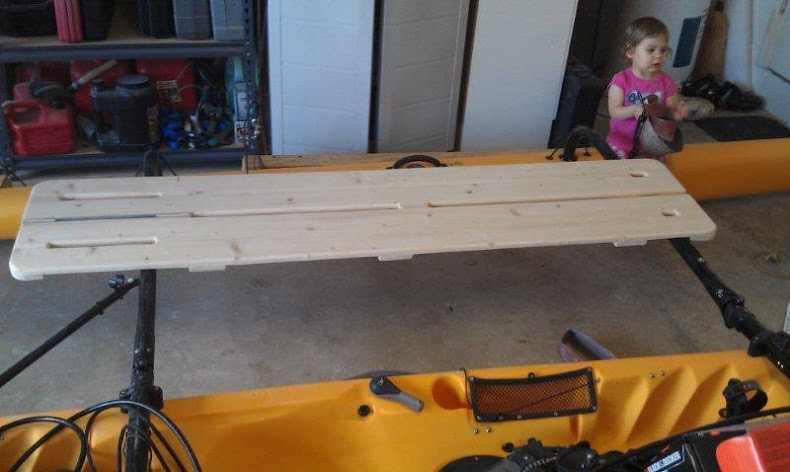
Here you can better see how I embedded these to provide the extra stiffness, as well as not interfere with the akas. I will note that there is still a little flex, and I'm not sure how much the flex was reduced in the rear with the addition to these. My very quick and unscientific seat of the pants test, didn't result in any conclusive results.

I would have filled the center front part in for a more refined finish, but I left it open for the possibility of future enhancements. For instance, I noticed the arm of my anchor fits nicely in the center with it open.
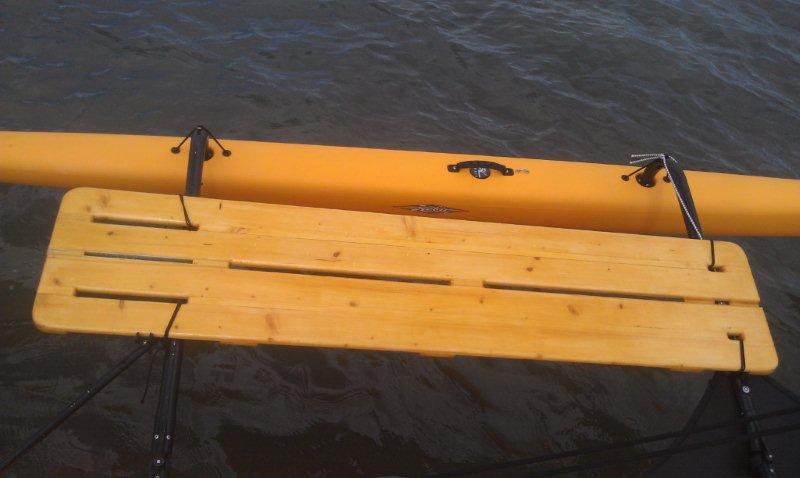

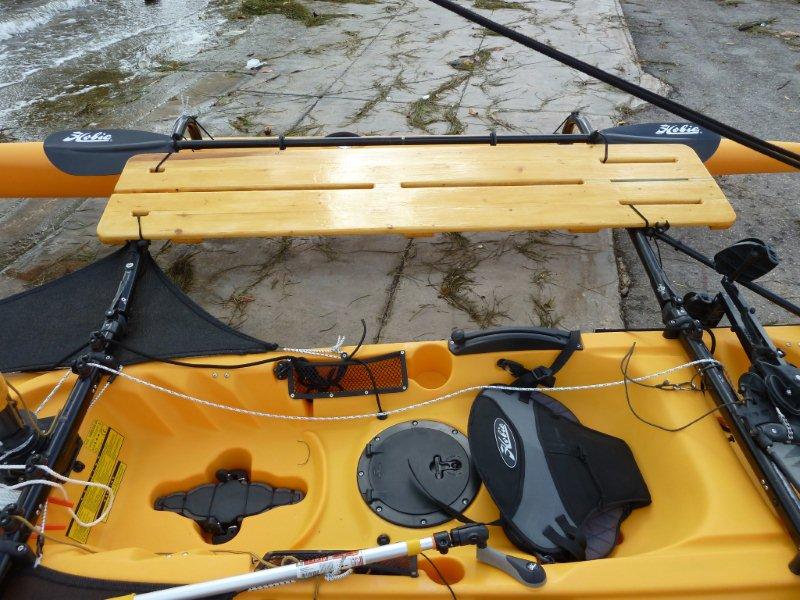

This is looking at downtown Miami from the rear of the hakas on their maiden voyage.

From the bottom, you will notice the 2 vertical members I used for the support. These vertical members are the only 1"x4" pieces I used. Everything else was made from 1"x3" pieces of pine. You will also notice the pieces of neoprene rubber used to protect the akas. Also, all the screws are on the bottom. If doing again, I would use much less of these due to cost (stainless steel), weight, and the fact I don't think I really needed them since I glued everything.
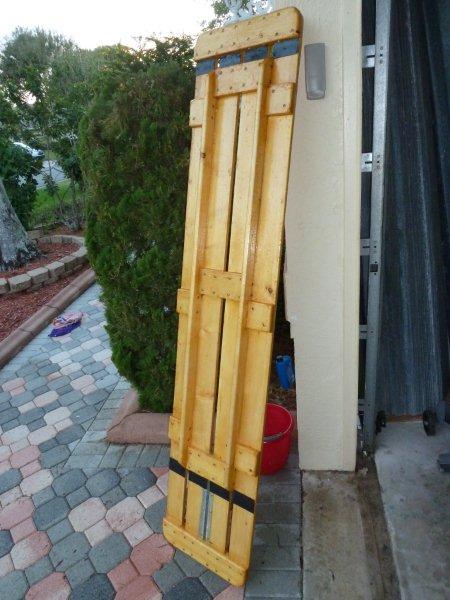
Although it's a little more weight, I'm glad I went with the 2 vertical members due to the additional rigidity. Maybe a denser wood, would have given me more stiffness, and could have done closer the equivalent of my two. There's still a bit of flex, but not much. I weigh close to 190 pounds. One of the other reasons I did 2 instead of 1, is so I could lie them flat on the ground and not have them tip over. I thought it would be nice if I were to camp somewhere, to be able to pull these off, and to have them be stable on the ground for sitting, or using as a table.

I must mention my hiking stick, or rudder control extension also, as this was a problem I wanted to solve before completing the hakas. I used the RAM mount system as noted by Sun E Sailor in a previous post. The differences are I screwed it directly into the rudder handle, and used an extendable aluminum paint brush pole that you twist to extend, which I paid around $7 for on Amazon. It all worked excellent on my first voyage.
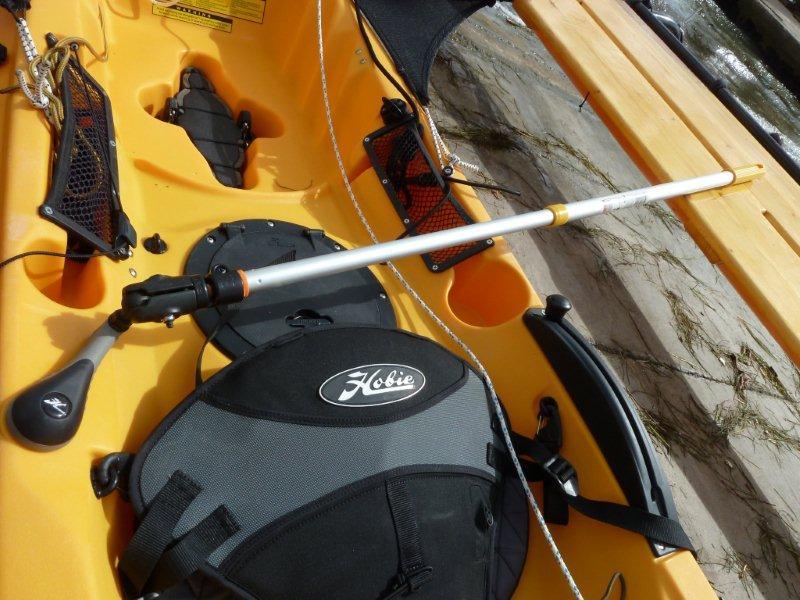

So there it is. I thank NOHUHU and everyone else here for the inspiration.




